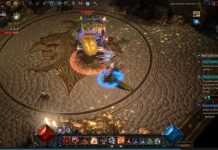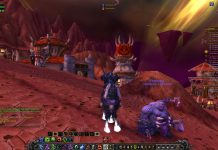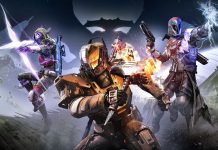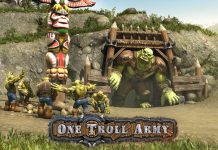Dungeons & Dragons: Heroes of Neverwinter (review it yourself here) is a free-to-play Facebook game currently in open beta and available to the public, developed by and published by Atari and developed in collaboration with Liquid Entertainment. As a D&D licensed game, HoN brings a much-needed break from the drudging social-grindstone presented by click-and-churn Zynga games such as CityVille and Mafia Wars. While it’s not the sort of game that I would feel possessed to call a traditional MMO—sadly you don’t get to actually spelunk or dungeoncrawl with your friends—it does present an excellent gaming engine with actually engaging gameplay.
Like most Facebook games, HoN runs entirely in the browser and is accessed via Facebook as an app. It’s actually extremely polite about spamming your friends with requests or asking you to allow it to access your account. In fact, when I signed up for the app it only asked for access to my wall (to post when I ask it to) and to my birthdate. I am a little confused as to why it wanted to know my birthdate—perhaps if Facebook wants to identify minors, it might allow apps access to your 18+ status rather than your birthdate to apps… Unless Atari wants to send me presents?
What I’m told that HoN does deliver, in spades, happens to be a 4th Edition Dungeons & Dragons rules game. Now, ordinarily, I’d be confused by this sort of statement (RPG rules are not my main area of study) however, I’ve got to say that I’ve recently been drawn into a 4th Edition Rules game of Spelljammer so I now have experience in what exactly that means. HoN does an excellent job of providing an authentic baseline of those D&D rules and the supplemental material that comes with them from character creation, combat mechanics, and movement.
Although, I suspect there’s been a bit of rules-munging along the way in order to fit the mechanics into the format of a social online game.
Gameplay: 4th Edition Rules here we come, turn-based combat, recruit your friends… Fireball!
The game doesn’t give a lot in the way of character customization, but it’s not like you’ll spend a lot of time staring at your toon while playing. Most of the game is played in turn-based combat moving across a map (often a small region) where you’re controlling one and four characters to take apart enemy forces. You’ll probably always have a fair idea of which one is yours. You can either choose from a template race/class or customize your own on the spot.
The number of classes and races available is straight out of the 4th Edition rulebook—Humans, Eladrin, Halfling, and Dragonborn—although missing dwarves and elves seems a bit of a cheap shot at most traditional fantasy. Each race has special abilities that can be used as once-per-encounter powers such as the Eladrin Fey Step (go a moderate distance teleport) and the Dragonborn Fire Breath (speaks for itself.) The classes are the four standard—fighter, mage, cleric, and rogue—and a since the maximum team size includes only four characters it makes sense to go with one of each for most missions.
In the beginning dungeons are hard. I say this because dungeons that cost 15 or 20 Energy units have repeatedly killed my main day after day, even after I recruited one of my friend’s level 7 wizards (who literally clears dungeon passages of level 2 kobolds no problem with Lightning Orb.) This brings up an interesting affect of the game—if you have friends playing the game you can recruit their character to go with you into dungeons. Conversely, your friends can recruit you; and when they do you’ll receive gold for being recruited.
People with no friends can hire mercenaries before embarking on missions for a price.
I mentioned Energy above and how dungeons have an Energy cost. Essentially, Energy is Heroes of Neverwinter’s play limiter. You have a maximum of 20 Energy at the beginning of the game and slowly regain it after you spend it. Dungeons have an Energy cost. You can also immediately replenish your Energy by spending the microtransaction currency if you want to play more times during a day.
In game, gold is used to purchase equipment for your characters. Also, if you’re willing to spend the microtransaction coin (Astral Diamonds) can buy bigger and badder items or things that will obliterate everything in line of sight—this makes dungeons a great deal easier. Astral Diamonds can be bought as microtransaction currency and they’re doled out slowly and intermittently from finishing missions.
At high enough levels, players are also given access to architect player-generated-missions—and you can even play them in game for rewards and experience. Characters first must make it to level 10 in order to access the dungeon building, so from there the player would then be able to make their own narratives and show them off to friends. There’s even a rating system that allows the community to pick the adventures they found the best built.
I haven’t had a chance to experience that; but it looks like another creative outlet that players who became jaded with thumping kobolds and skeletons.
Graphics and audio: It’s a turn-based-combat browser-based game; I think we’ll go easy
Neither graphics or audio for Heroes of Neverwinter are really that impressive, but this isn’t where the game really shines. It’s simplistic, sprite-based, and the effects are cheesy. Part of what really makes me like this game is that it reminds me of ancient Dungeons & Dragons games that I used to play on an old IBM such as Curse of the Azure Bonds and Eye of the Beholder by Strategic Simulations, Inc. The graphics of this game are much superior to that—but it still triggers that little twinge of nostalgia.
The UI does a fair job of allowing me to pick spells (or abilities) and explain why they’re not accessible right now. Players do need to understand what once-per-encounter vs. at-will might mean; but unavailable is unavailable. Also, each one does tooltip damage and give an idea of why I might use it. When moving squares that can be moved to turn green, and when using spells the target-possible area turns red. It’s fittingly intuitive.
The turn-based-combat UI has some weird little issues. It’s still in beta, so this is expected, but there’s no easy-mechanism for shifting gaze across the battlefield. Sometimes I’ve had to aim spelled by guess in order to hit an enemy in line-of-sight but outside of my field of view. Plus, because it’s Flash, sometimes I accidentally forget and click the wrong mouse button and pull up the Flash context menu over my game and have to spend time trying to figure out how to make it go away.
The sounds are fairly primitive and the music isn’t that great. I know the game mostly now by the one-song that it plays on repeat that’s extremely synthesized and sounds like someone tickling a xylophone. I could live without it, but I haven’t felt the need to locate the mute for the music.
Monsters and players make a little bit of sound when they’re moving and spells/abilities each have their own synthetic foley. For the most part, most things sound exactly the same. Attacks sound pretty similar, acid arrows and stinking clouds sound pretty similar; enemies die and fall over with a similar “bleegh!” I don’t know that I care that much that there’s little definition or even variety of sounds. This is a Facebook game, after all.
Freemium: It’s Astral Diamonds or bust!
The in-game microtransaction currency are Astral Diamonds, and you purchase them with Facebook credits. 1200 Astral Diamonds costs $100 in Facebook credits—so as a minimum price, an Astral Diamond is about eight cents and maximum is ten cents.
The game can really push you towards purchasing Diamonds with to receive bigger and better equipment (to level faster and actually survive dungeons) and also to give yourself more Energy so that you can keep playing more often. You run out of Energy quickly; in fact, most dungeons will burn so much Energy that you’ll end up waiting a few hours to be able to go into a new dungeon. Refreshing Energy can cost 10 Diamonds; but you can also purchase unlimited Energy with 250 Diamonds (I don’t know if that’s lifetime permanent.)
$2.50 to play the game whenever you want without having to take breaks between dungeons? That sounds pretty tempting.
Diamonds also allow you to refresh the offering at stores—if they don’t have anything you want currently and hope that something more interesting will appear—and you can spend them instead of gold when recruiting mercenaries before heading into the ruined dungeons and dangerous forests as well. There don’t seem to be any items that cannot be bought also with gold and Diamonds there just act as alternative currency. They can also be used to unlock inventory items useful in dungeons when spelunking.
Conclusion: Geeky, cute, and altogether quite fun
As a reviewer, I play the games quite thoroughly in order to understand how they work and why players might like them. Dungeons & Dragons: Heroes of Neverwinter feels less like an MMO and much more like a solo-game with social aspects welded onto it; but the fact that I can reach out and bring my friends characters into my game and they can bring mine into theirs really sets it up as a social game.
There’s also a great deal of storytelling within the game. If you’re up for reading a lot as your mowing through kobols and skeletons you’re in for an excellent casual Facebook game.
Did I mention I ran into a juvenile white dragon (and walked out victorious!) in the game? This is only scratching the surface of what the game has to offer, I’ve experienced only perhaps six out of a total of what looks like at least fifty dungeons. A Facebook game player looking for a distraction time-to-time and willing to direct characters across a battlefield will probably get a fair amount of out of this game.























